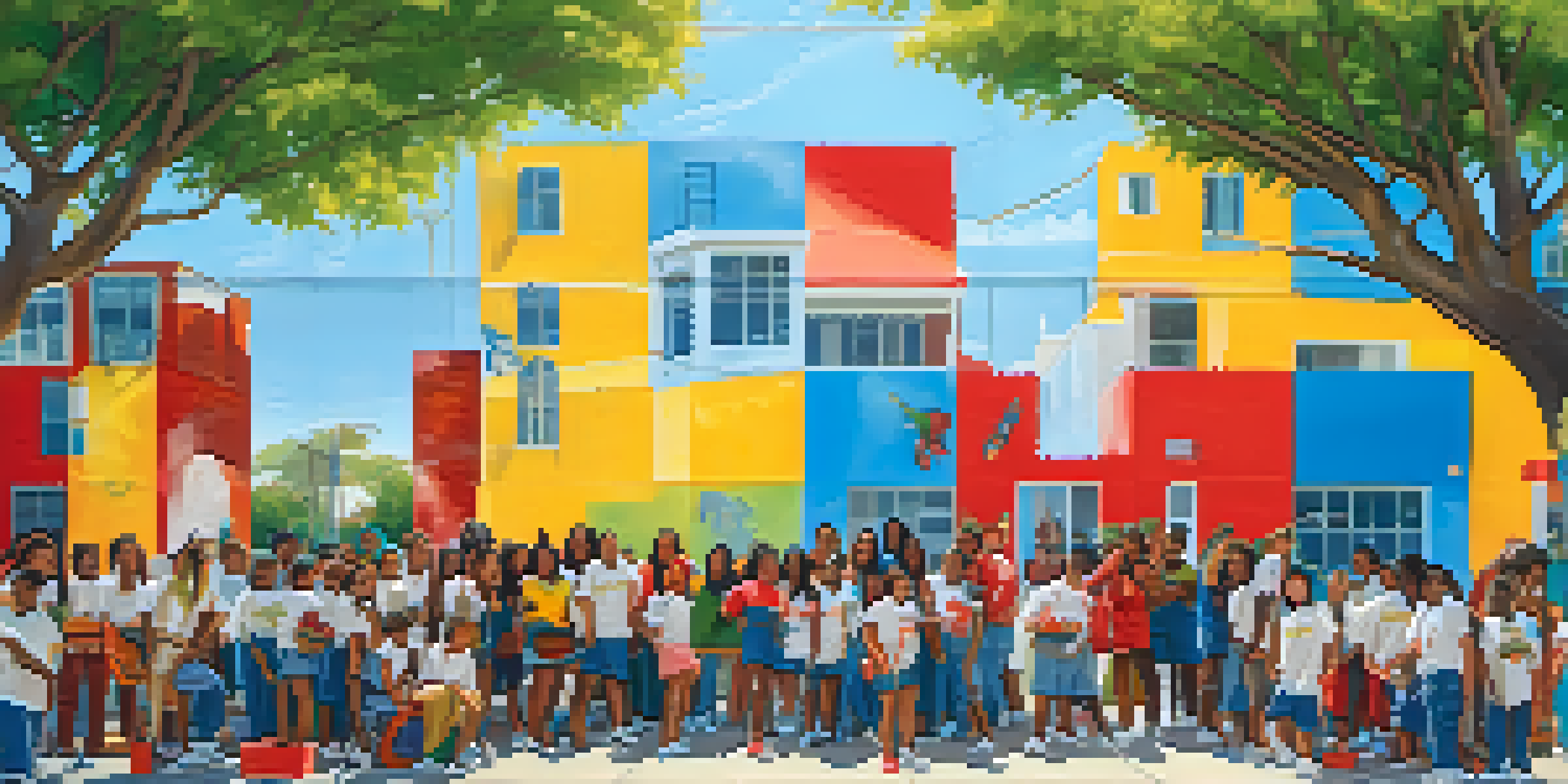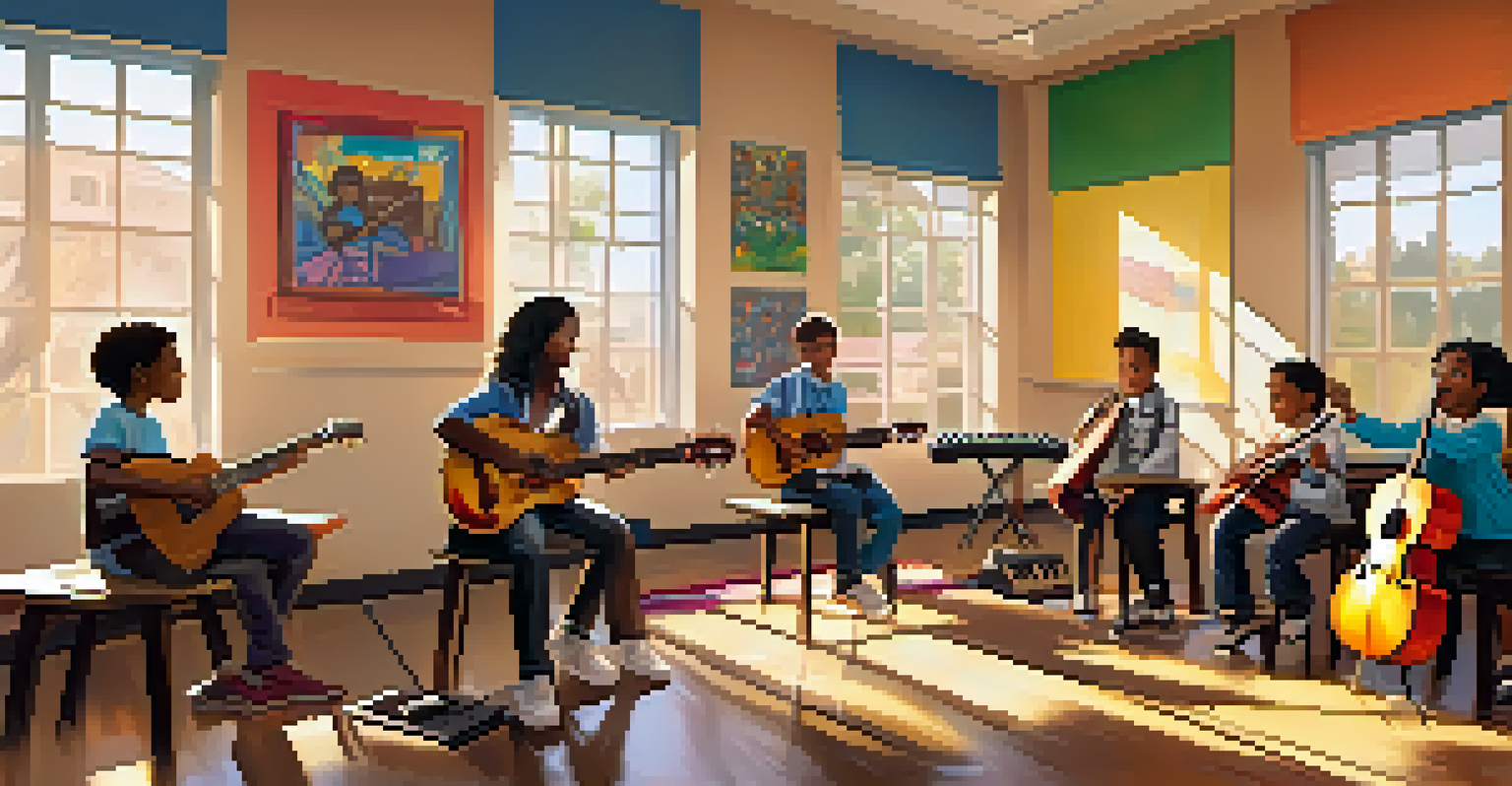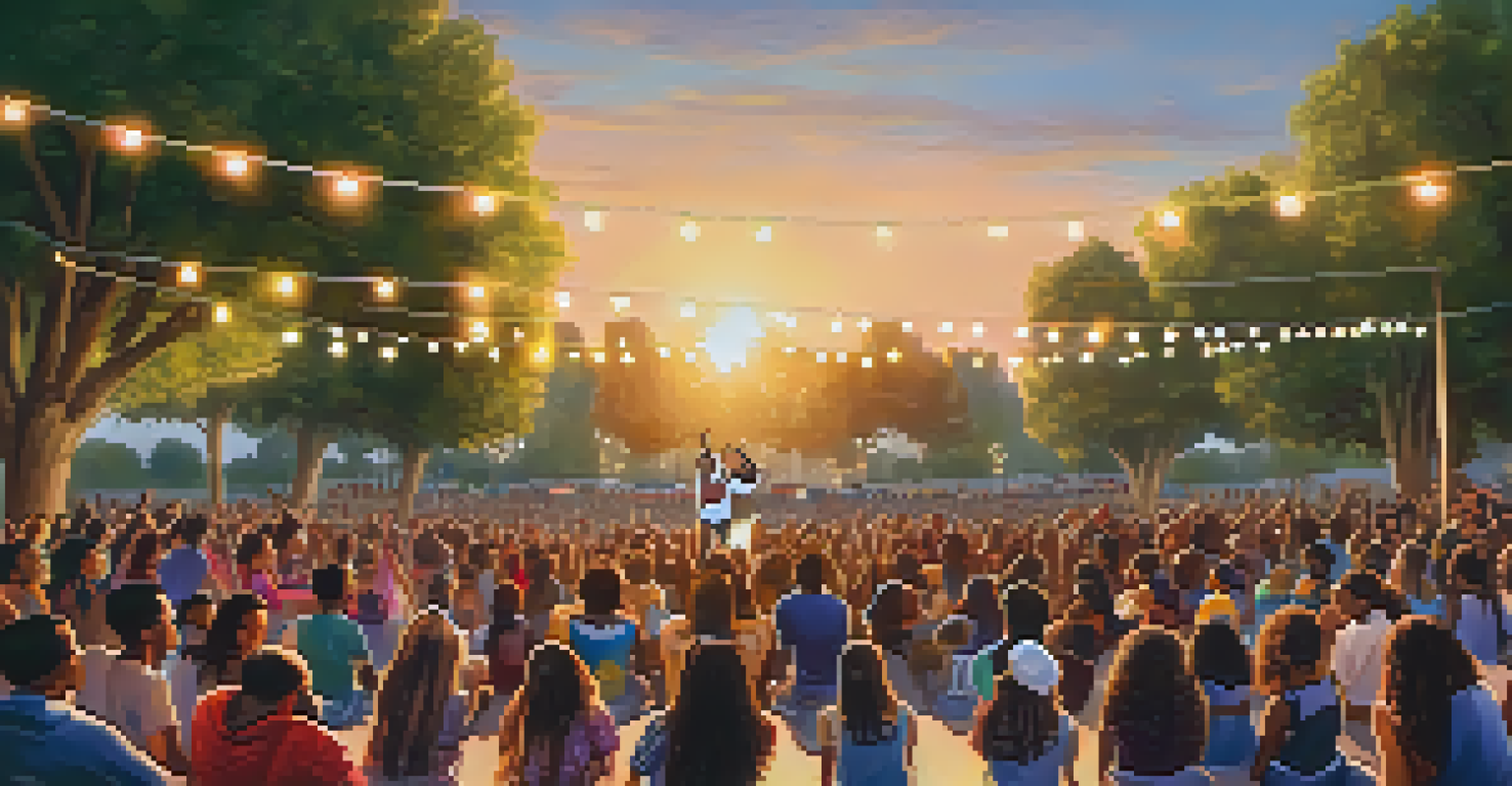The Impact of Arts Education on Compton's Youth Development

Understanding the Importance of Arts Education
Arts education encompasses a wide range of subjects, including visual arts, music, theater, and dance. It's not just about learning how to create; it's about developing critical thinking and problem-solving skills. For Compton's youth, engaging in artistic endeavors provides a platform for self-expression and creativity.
Art is not freedom from discipline, but disciplined freedom.
In a community often overshadowed by socioeconomic challenges, arts education can serve as a beacon of hope. It encourages students to explore their identities and share their stories through various art forms. This exploration can be incredibly empowering for young people, helping them build confidence and a sense of belonging.
Moreover, arts education fosters collaboration among students, teaching them to work together towards a common goal. This teamwork is invaluable as it prepares them for future challenges in both academic and professional settings.
Boosting Academic Performance Through the Arts
There's a growing body of research that suggests a strong correlation between arts education and improved academic performance. Students involved in the arts tend to achieve higher grades and test scores compared to their peers. This boost can often be attributed to enhanced focus, discipline, and creativity developed through artistic practice.

In Compton, where educational resources may be limited, integrating arts into the curriculum can provide a much-needed engagement tool. When students connect emotionally with what they are learning, they are more likely to retain information and develop a love for learning. Arts education makes subjects like math and science more relatable and enjoyable.
Arts Boost Academic Success
Participation in arts education correlates with improved grades and test scores by enhancing focus and engagement.
Additionally, by participating in arts programs, students often develop better communication skills, which are essential in any academic pursuit. The ability to articulate ideas and collaborate effectively with others can greatly influence their overall educational experience.
Fostering Emotional and Social Development
Engaging in artistic activities can significantly impact a young person's emotional well-being. For many Compton youth, arts education offers a safe space to explore feelings and express emotions they might struggle to communicate otherwise. This process of self-discovery can lead to greater emotional intelligence and resilience.
The arts are an integral part of education, just like reading, writing, and arithmetic. Music, dance, theater, and the visual arts are the building blocks of a complete education.
Participating in the arts also nurtures social skills, as students often work together in groups. They learn to respect diverse perspectives, share constructive feedback, and celebrate each other's successes. These interactions help build strong relationships that can extend beyond the classroom.
Moreover, arts education can act as a powerful tool for healing, especially in communities affected by trauma. Creative outlets allow youth to process difficult experiences in a healthy way, promoting mental health and well-being.
Cultivating Cultural Awareness and Appreciation
Arts education introduces students to a variety of cultural expressions and histories, enriching their understanding of the world. In Compton, where a vibrant mix of cultures exists, this exploration can help foster appreciation for diversity. Students learn to see the beauty in differences, which is vital for harmonious community living.
By engaging with different art forms, such as music from various cultures or visual arts depicting historical narratives, students gain insights into the lives and struggles of others. This cultural exchange promotes empathy and a sense of global citizenship among youth.
Fosters Emotional Well-Being
Arts education provides a safe space for students to express emotions, promoting resilience and emotional intelligence.
Furthermore, encouraging students to share their own cultural stories through art can empower them and strengthen their connection to their heritage. This not only builds individual pride but also creates a richer, more inclusive community fabric.
Encouraging Career Exploration and Opportunities
Arts education opens up a myriad of career paths for students, many of which they may not have considered otherwise. Through exposure to various artistic disciplines, Compton's youth can discover passions that lead to fulfilling careers in the creative industries. This exploration can be especially important in a city with limited job opportunities.
Moreover, involvement in the arts can enhance a student's resume and skill set, making them more competitive in the job market. Skills gained through arts education, such as creativity, project management, and teamwork, are highly valued by employers across all sectors.
Programs that connect students with local artists and professionals can also provide mentorship opportunities, guiding them towards internships and job placements. This real-world experience is invaluable in helping youth transition successfully into adulthood.
Building Community and Strengthening Connections
Arts education has the power to bring communities together, fostering a sense of unity and collaboration. In Compton, community art projects and performances can create shared experiences that bond individuals. These events often bridge gaps between different age groups and backgrounds, promoting a culture of inclusivity.
By participating in arts initiatives, students can engage with their families and neighbors, encouraging them to take pride in their local culture and history. This shared investment in the community can lead to a greater commitment to making Compton a better place to live.
Builds Community Connections
Arts initiatives unite communities by fostering shared experiences and encouraging pride in local culture.
As students showcase their artistic talents through exhibitions or performances, it not only boosts their self-esteem but also creates a platform for community dialogue. Such interactions can highlight local issues and inspire collective action towards positive change.
Overcoming Challenges in Arts Education Access
Despite the numerous benefits, access to arts education in Compton can be challenging due to funding cuts and limited resources. Many schools struggle to integrate the arts into their curricula, which can leave students without these crucial opportunities. Advocating for arts education funding is essential to ensure all students can benefit.
Community organizations and local artists play a vital role in filling these gaps by providing workshops and programs outside of school hours. These initiatives can be lifelines for students eager to explore their creativity but lacking formal education in the arts.

Additionally, partnerships between schools and local arts institutions can create more sustainable access to arts programs. By working together, they can pool resources and expertise to provide comprehensive arts education that is inclusive and impactful.